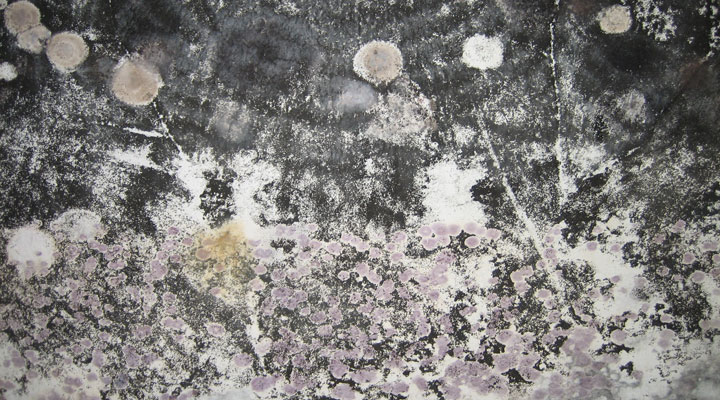Mold And Your Health in CT
If you’re like most of our customers, you take pride in a clean home. Many of you even try to do what you can for indoor air quality, whether it’s by regular dusting, using portable air filtration systems, changing your HVAC filters regularly and making sure your vacuum has a good HEPA filter. But there are other culprits that can undermine indoor air quality in Connecticut, and mold is one of the worst we’ve seen. Because it can be so hazardous to your health, we wanted to explore its causes, detection through indoor air quality testing, and other indoor air quality services we offer in CT so you can breathe a little easier.
Mold 101
Instinctively, we know mold is a problem; nobody asks for an extra helping of spores on their peanut butter and jelly sandwich, after all. But what causes mold to grow, and why is it so important to detect? For that matter, how can you detect it?
Mold Growth Causes
The CDC identifies three especially prevalent and problematic mold strains: Cladosporium, Penicillium, and Aspergillus. These are so widespread that even the CDC admits that they aren’t sure of the full extent of the problem. They do, however, point to a few conditions that contribute to mold growth.
- First, mold needs a way into your home; most commonly, this is through your HVAC system, and through parts of the home that are poorly insulated
- Second, mold needs a hospitable surface on which to grow; unfortunately, it’s hardy, so from carpeting to drywall to insulation and furniture, it has no shortage of options
- Third—and perhaps most importantly—mold thrives in areas where humidity is high; stick a pin in that, since we’ll be returning to it shortly
Health Issues Caused by Mold
All of this means that mold issues are easy to come by. So too, unfortunately, are the health issues mold brings with it. Mold has been linked to the development of asthma in kids and the aggravation of the condition at all ages. It also goes hand in hand with other respiratory problems, including shortness of breath, bronchitis, lung infections, coughing, and wheezing. Even if your respiratory system is clear, you may still experience skin and eye irritation. And these symptoms are usually exacerbated for individuals who are immunocompromised.
Signs of Mold in Your Home
How can you tell if your home has mold? Sometimes it’s easy since mold growth can be visible on a number of household surfaces; this is especially true of hard surfaces like sheetrock, tile, hardwood floors, and molding. But there are other times when it’s harder to spot, especially on porous surfaces like carpet and upholstery, or when it’s hidden in your insulation. If you’re not sure, there are three telltale signs worth looking for:
- A musty odor often signals the presence of mold
- A persistent feeling of illness or allergies—especially one that clears up when you leave your home—is another
- As we’ve seen, mold thrives on moisture; if one or more rooms in your home are consistently damp or humid, there’s a good chance that mold will start growing if it hasn’t already
Taking Care of Household Mold
Given the consequences, it’s easy to see why you’d want to take care of a mold problem quickly and effectively. There’s a three-step process to do just that.
First: Confirm
Often as not, you may have little more to go on than a hunch. But there are times when this isn’t your best bet, since some respiratory issues may stem from other culprits—like household dust, allergens, or airborne bacteria—that are better addressed with duct cleaning or an air purification system. So it’s a good idea to begin either with a commercially available mold detection kit, or having an IAQ audit done by a qualified professional like Climate Care.
Second: Trace to the Source
Let’s say your testing confirms the presence of mold. What next? We suggest finding the sources of your problem. This can mean getting HVAC maintenance to ensure your heating and cooling systems aren’t spreading spores. It can also mean having your plumbing inspected for leaks since this is a common source of the humidity on which mold thrives. We also suggest checking the insulation in your walls and attic—especially where it abuts plumbing fixtures and pipes—since these areas are uniquely hospitable to mold.
Third: Undertake Remediation
Now that you’ve identified the source, it’s time to start fixing your problems. Sometimes this starts with re-insulating, getting pipes repaired, and installing new sheetrock. Replacing a dripping plumbing fixture, or ensuring proper ventilation, can also be extremely helpful. Depending on the nature of the problem, a single room or whole-home dehumidifier can also be helpful. And if you’re worried about mold after a burst pipe, flooding, or a major leak, you mustn’t wait to get cleanup and remediation from a company qualified to handle the task properly.
Addressing Indoor Air Quality Issues
Mold is just one of the many indoor air quality issues faced by Connecticut homeowners. If you’re trying to ensure that your home and everyone in it are safe and sound, we invite you to call Climate Care for a full range of indoor comfort solutions!


Recent Comments